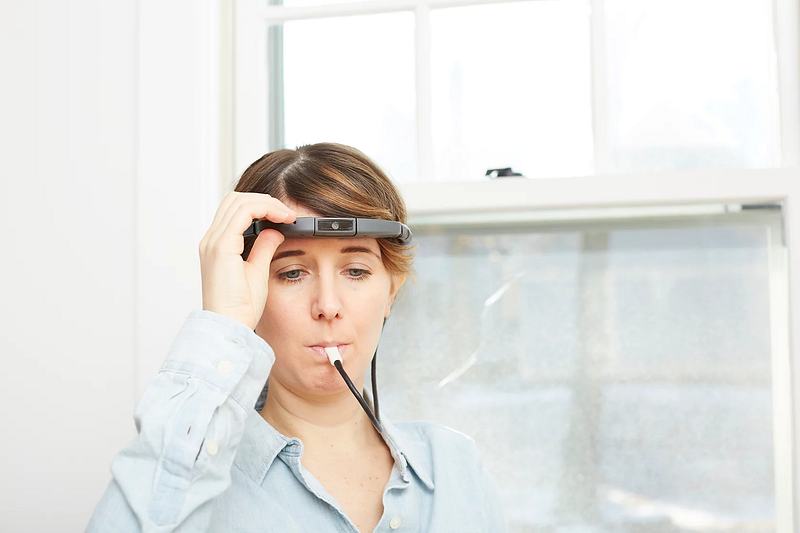Exploring Molyneux's Problem: A Philosophical Inquiry
Written on
Chapter 1: Understanding Molyneux’s Problem
Molyneux's problem presents a seemingly straightforward question that unfolds into a labyrinth of philosophical discussions. At its core, it examines how human perception interacts with our senses of sight and touch.
Imagine a person who has been blind since birth and has learned to identify objects like cubes and spheres solely through touch. If this individual suddenly gains the ability to see, would they recognize these shapes by sight alone before touching them? This inquiry encapsulates the essence of Molyneux's problem. While the premise is simple, it leads to intricate implications that merit exploration. This essay aims to dissect the various challenges that arise in addressing Molyneux's problem and highlight the contributions of prominent thinkers in this field.
Before diving deeper, let's trace the historical roots of Molyneux's problem.
The Historical Context of Molyneux’s Problem
William Molyneux, an Anglo-Irish philosopher, was notably intrigued by the challenges faced by the blind, having a blind wife himself. In 1688, he posed a compelling question to fellow philosopher John Locke:
"Imagine a man born blind, now grown, who can distinguish between a cube and a sphere of similar size and material through touch. If these shapes are then placed before him after he gains sight, could he identify them by sight alone?"
— William Molyneux
Locke’s response to Molyneux's inquiry was pivotal, as articulated in his influential work, "An Essay Concerning Human Understanding." This dialogue sparked extensive debates among esteemed philosophers and scientists, who generally fell into two opposing camps.
Molyneux’s Problem: Rationalists vs. Empiricists
Epistemology, the study of knowledge, presents two approaches: rationalism, which relies on logical reasoning, and empiricism, which is grounded in experience. Locke advocated for the empirical perspective, arguing that a person blind from birth would not immediately recognize shapes visually since they lack the experiential connection between visual and tactile attributes. He was supported by philosopher George Berkeley, who emphasized that different senses yield unique perceptions.
In contrast, rationalist Gottfried Wilhelm Leibniz contended that a formerly blind individual could use reasoning to differentiate between shapes. For instance, he noted the inherent geometric properties of a sphere versus a cube, suggesting that a blind person could apply logical reasoning to connect their tactile experiences with newfound visual sensations.
This debate persisted until empirical experiments began to provide insights.
Experimental Approaches to Molyneux’s Problem
In 1728, English surgeon William Cheselden documented a case where he restored sight to a 12-year-old boy suffering from cataracts. Post-surgery, the boy struggled to identify shapes without first touching them, suggesting a disconnection between his visual and tactile experiences.
While this provided compelling evidence, critics argued the small sample size and the boy's mental capabilities could skew results. Fast forward to 2011, Held et al. conducted an experiment with subjects aged 8 to 17 before and after cataract surgery. Initially, their ability to recognize objects was nearly random, but accuracy improved significantly shortly after surgery, indicating that the brain can quickly adapt and synchronize sensory information.
Yet, does this definitively answer Molyneux's question? Not entirely.
Sensory Substitution Devices (SSDs)
Bach-y-Rita developed a device known as the "BrainPort," which translates visual information into tactile sensations on the tongue.

Users of the BrainPort report that, after a period of adjustment, they can 'see' through their tongue. Interestingly, studies indicate that even individuals with congenital blindness activate visual processing areas of the brain when using such devices, suggesting that recognition of shapes may be possible through alternative sensory pathways.
Conclusion: The Ongoing Relevance of Molyneux’s Problem
Despite empirical findings suggesting answers to Molyneux's question, a definitive solution remains elusive. A person newly endowed with sight may be overwhelmed by sensory information, complicating their ability to distinguish shapes. Over time, however, they can learn to associate tactile and visual sensations.
While Molyneux's problem may not be entirely resolved, it continues to inspire scientific inquiry and innovation. The ongoing exploration of human senses leads to advancements in technologies that enhance the lives of those with congenital or profound blindness.
In essence, Molyneux's problem not only fuels philosophical debate but also drives the development of practical solutions, benefiting humanity as a whole.
References: John Locke (philosophical essay), William Cheselden (medical report), Held et al. (scientific paper), and Michael Abrams (article on BrainPort invented by Bach-y-Rita).
If you found this exploration valuable, consider supporting my work through claps, follows, or subscriptions.
Further reading: Can You Really Solve The Staircase Paradox? and How To Hear Acceleration Without Modern Technology?
The first video titled "Molyneux's Question - Can It Be Solved?" delves into the complexities surrounding this philosophical challenge and discusses varying perspectives from historical figures.
The second video, "The Molyneux Problem Explained," provides a comprehensive overview of the problem and its implications, making it accessible for a broader audience.